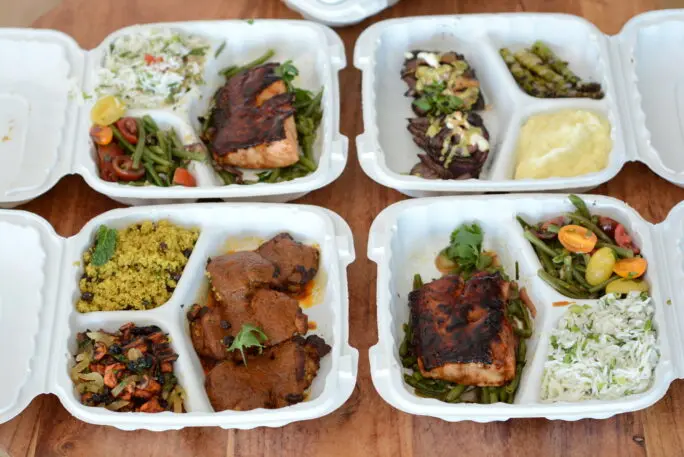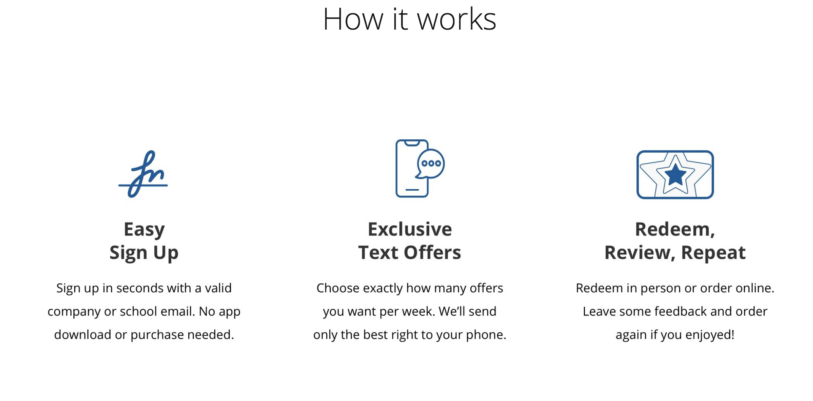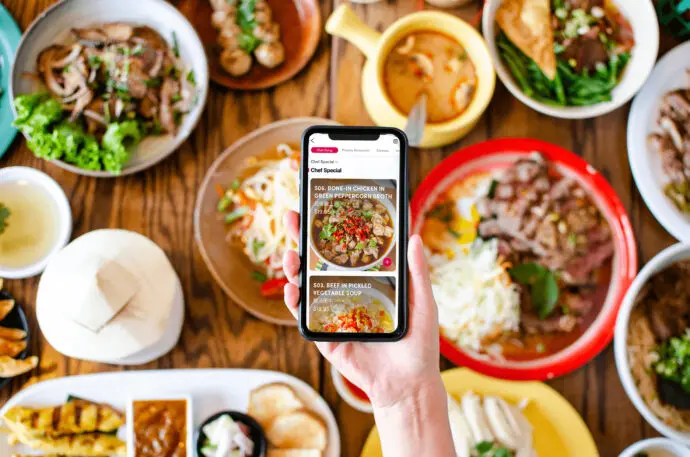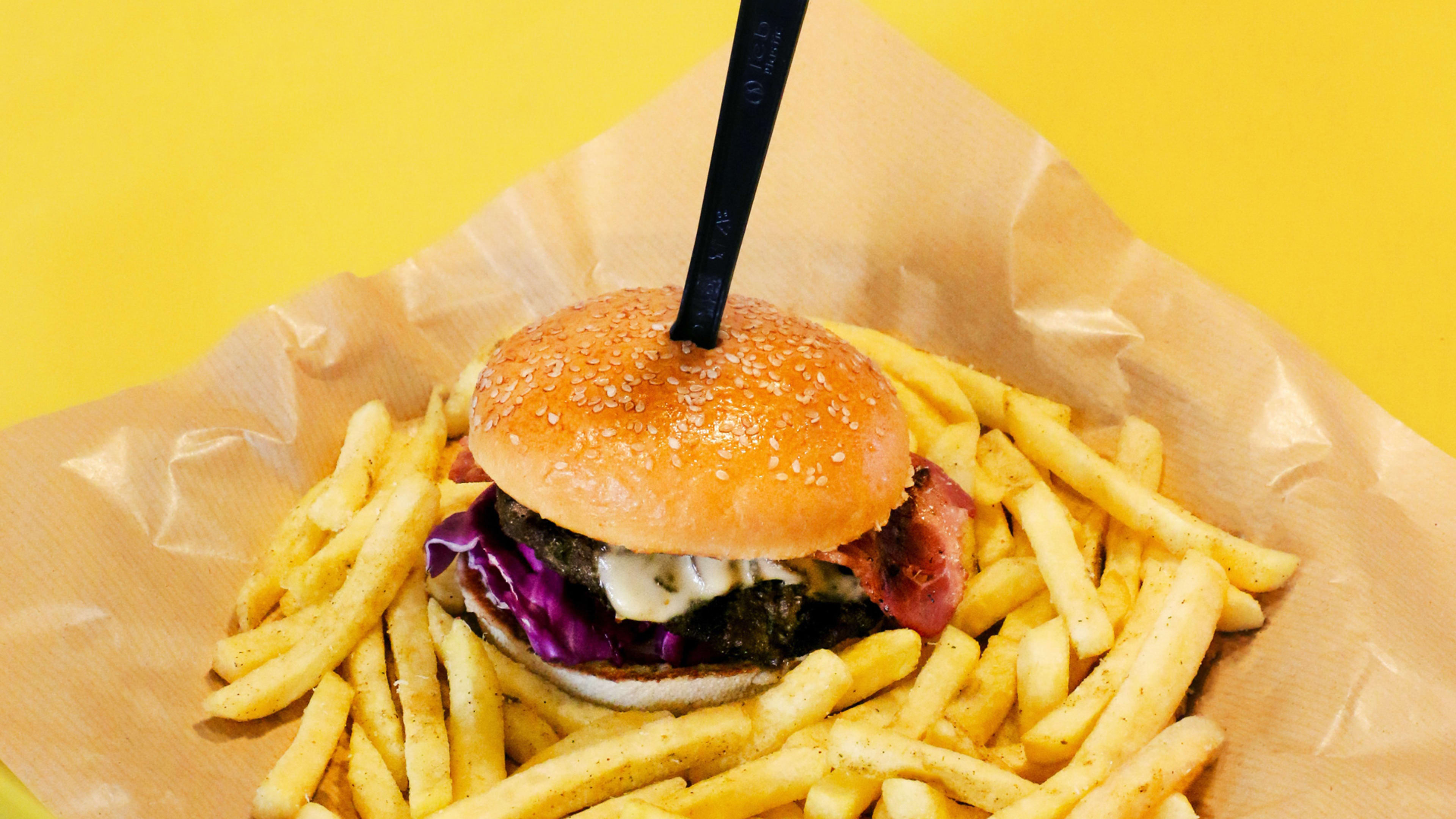“The pandemic really just crushed us,” says Sean Li, cofounder of CaterCow, a platform that partners with restaurants to deliver big batch buffet-like food options primarily to offices and event spaces across eight major U.S. cities. When most nonessential businesses shut their doors in mid-March and people started working from their living rooms, Li says he saw his business’s revenue “tank by 98% over the course of the week.”
Office catering is hardly the only food business to fizzle; the entire restaurant industry is under threat. As dine-in culture has dissolved around the country, restaurants’ primary chance to stay afloat lies in takeout and delivery orders, and to pull this off, they depend on third-party food delivery services. While research shows that the apps’ popularity was already trending upward pre-pandemic, restaurants have reported an additional uptick in the customers’ use of these apps. More app use means more orders, but with the sky-high commissions that some businesses have described as “predatory,” many restaurants are struggling to make their already slim margins.
In a moment where more people are ordering in than ever before, it’s prime time for a new food delivery app model. Now, plenty of small competitors are aiming to be a more sustainable alternative to the delivery behemoths by focusing on solving restaurants’ problems, not exploiting them—and offering consumers better choices in the process.
The sorrows and struggles of Big Food Delivery
It’d be unfair to say that the major players in food delivery—Grubhub, DoorDash, UberEats, and Postmates—are totally thriving off the restaurant industry’s despair. Not immune to the economic ruthlessness of the pandemic, the companies have lost revenue, delayed IPOs, and laid off employees.
Still, they’re not flailing, either. According to its second quarter earnings report published last week, Grubhub earned $459.3 million, a 41% year-over-year increase from the second quarter of 2019. Grubhub’s second quarter also saw 25% more orders than it did in its first, a sign that consumers continue to rely on the service as the early days of the COVID-19 pandemic turn into months.
Grubhub and its competitors make money by taking around 15% to 30% commission (though this range can vary) from every order placed through its platform. In March, Chicago-based food truck owner Giuseppe Badalamenti shared his Grubhub monthly statement to illustrate the effect the notorious commission-based model can have on restaurants’ fragile bottom line. In Badalamenti’s case, GrubHub pocketed nearly 65% of the sales made through its platform. A representative at the company said that this particular restaurant participated in optional promotions that led to additional fees, deeming the case an outlier, but there are plenty of other instances that suggest restaurants are at the mercy of delivery apps.
The apps also charge their users, a practice that’s become especially egregious; all of the big four are in the midst of a class-action lawsuit for charging excessive fees that get paid out by customers.
Nevertheless, the far-reaching services are evolving into behemoths and are consolidating to scale and diminish competition. In July, UberEats, the most-downloaded food delivery app in Q2, announced it’d be acquiring Postmates for a $2.65 billion all-stock deal. Similarly, Grubhub was bought by a European service called Just Eat Takeaway in June for a $7.3 billion all-stock deal. Also in July, DoorDash secured a partnership with Walgreens, broadening its horizons to deliver health products and over-the-counter drugs to its users.
Fixing a broken business model
Despite these enormous acquisitions and partnerships, delivery app giants struggle to reach profitability, even while charging feeble restaurants exorbitant fees. From this viewpoint, the food delivery ecosystem is broken. It’s one of the reasons why smaller, more localized delivery services have emerged with a new focus: to help restaurants market themselves, instead of charging hefty commissions. These newer services highlight Big Food Delivery’s shortcomings while gunning for a piece of the pie themselves.
In May, just two months after CaterCow’s descent, Li and his team rolled out Fare, a product that delivers food from limited restaurant menus to outposts set up in apartment and real estate buildings. Fare pitches itself as “ethical, fair, and sustainable for local restaurants.” Plus, because it relies on just one delivery person to drop off a batch of meal orders, it reduces person-to-person contact—a COVID-19-related bonus. “We’re the first New York City food delivery service that doesn’t charge a fee to restaurants,” Li says, adding that a minimal fee is tacked on to the customer’s side, but still ends up being cheaper than the fees baked in the commission-run models of Grubhub and its equivalents.

Andy WangYou would be putting your restaurant at a significant disadvantage if you don’t sign up for these services.”
That’s why partnering with delivery apps is a damned-if-you-do, damned-if-you-don’t scenario for restaurant owners. “You would be putting your restaurant at a significant disadvantage if you don’t sign up for these services,” Wang says. “But there comes a point where you need to be a smart, savvy business owner.”
That’s where Spread comes in, essentially cutting out the middleman by allowing restaurants to return to the direct-to-consumer model that in-room dining once offered. Instead of charging commission, restaurants pay Spread small ad fees for hyper-local advertising to reach new customers.

“Our whole mission is to make it dead simple for restaurants to market directly to customers,” Wang says.
A hyper-local, mom-and-pop approach
Smaller mom-and-pop shops face another disadvantage in the delivery economy. They’re forced to compete with more restaurants for the same diners, and have to adjust their menus to stay competitive. This is often the case for Asian restaurants that are compelled to whitewash their menus for a bland, white palate.

Linxin WenThey don’t want to cook Americanized Chinese food, but they feel they need to do that to make a living.”
Wen launched Chowbus in 2015 to solve for the frustration he felt over the lack of “good Chinese food” on the delivery apps at the time. Chowbus now serves 22 cities, hyper-focused on “authentic” Asian food that independent-restaurant owners enjoy making. He says his service treats its restaurant partners like family, pairing clients with sales reps who speak their native language—the Thai salesperson is teamed up with the Thai restaurant. “You got to be in the community so you know what’s authentic and good, [and] I think restaurants are generally more open-minded when someone in the community can talk to them,” he says.

While Chowbus’s payment model follows that of the big players, Wen says he’s “proud to say we have the most competitive rate,” and that Chowbus takes the lowest commission rate compared to other platforms (Wen declined to share the numbers behind that rate). Some other differentiators? Chowbus offers long-distance delivery (Chicago to Milwaukee, Houston to College Station) for fees that never cost more than $6.99.
The model also mirrors that of Fare, in that customers have to place orders before a certain time so drivers can deliver multiple orders on every trip. Customers can also get dishes from multiple restaurants in one order, without any added delivery fees. With its curated restaurant selection, Chowbus also helps to mitigate decision fatigue that’s inevitable on other platforms. This benefits everyone, since “hidden gems just don’t come up with different platforms, and they’re buried by thousands of other choices,” Wen says.
Whatever the future holds for the relationship between delivery apps and restaurants, it’ll be up to consumers to decide what they really care about: Will they be willing to boycott services that are already installed on their phones with their credit card information to try out a new way of ordering dinner? Can they be convinced to pick up the phone to place an order instead?
It may be a lot to ask of a worn-down consumer whose only daily joy may come from scrolling through dinner menus until something hits them right. On the other hand, research shows that consumers are eager to support local businesses. Perhaps if people understand how food delivery apps are mistreating their local faves, they’ll be willing to delete their apps for good.
Recognize your brand’s excellence by applying to this year’s Brands That Matter Awards before the early-rate deadline, May 3.
